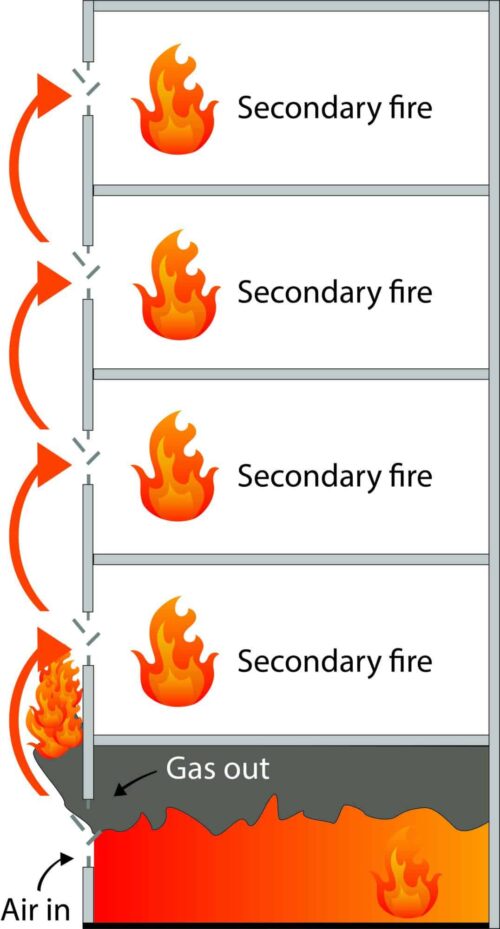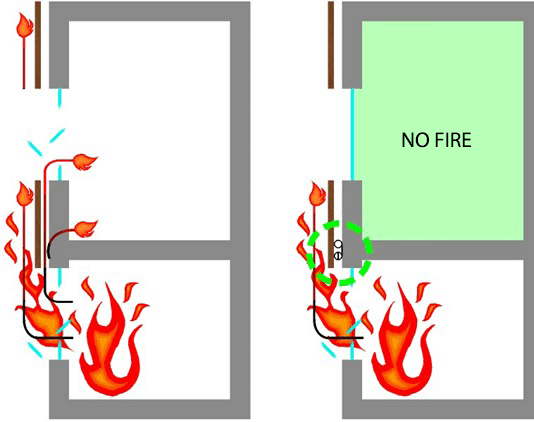How fire spreads in the façade?
Modern ventilated rainscreen cladding systems have become one of the preferred choices around the world for high-rise structures, providing design flexibility as well as weather protection. A free flow of air behind the cladding is very important to keep the cavity dry, but this also makes the façade one of the most vulnerable elements of a building in case of a fire.

Fire resistance is an integral part of the building envelope
Based on the compartement requirements, a façade must neither propagate fire, nor allow fire or heat to travel from one area to another. The facade should also remain structurally intact for a reasonable amount of time when exposed to fire.
That ultimately means that:
- The separating function between fire cells must be maintained.
- Spread of flame within the wall must be stopped
- Spread of fire along the surface of the building façade should be limited.
THE CHIMNEY EFFECT
Why are fire in cavities and air gaps in facades so dangerous? Due to the “chimney effect”, fire in the air gap behind cladding can spread very quickly. As the oxygen in the air gap is utilised, the fire seeks more oxygen and moves rapidly upwards.

“Leap-frog”effect and the chimney effect
Fire spreading only on the outside of cladding is often not that critical, while fire that spreads in the air gap behind the cladding can travel 5-10 times faster in the same time frame due to rapid buoyancy of hot air in the air gap, compared to fire on the outside. Travel speed of fire has been measured up to 8 meters per minute. Fire spread behind the cladding makes it difficult for fire fighters to extinguish.
The scenario described in the picture shows the leap-frog effect. A flashover occurs in a room causes fire to break out of a window. Flames and hot gasses escape a window and spread upwards. The fire finds gaps and penetrations and breaks-in the room above. This fire spead mechanism can potentially repeat.
WHAT IF MATERIALS IN THE CAVITY ARE NON-COMBUSTIBLE?
Even if the cavity itself is fully non-combustible, the extended length of flames created in the “chimney” still allows the flames to reach the next floor level, where windows and other wall penetrations will allow the fire to re-enter the building and maintain the spread of fire.
THE FIREBREATHER® CAVITY BARRIER STOPS THE CHIMNEY EFFECT
The Firebreather® Cavity Barrier is the only product on the market that has the ability to instantly stop fire from spreading in the air gap behind the cladding in a facade.
Read more about the advantages of the Firebreather® Cavity Barrier.

